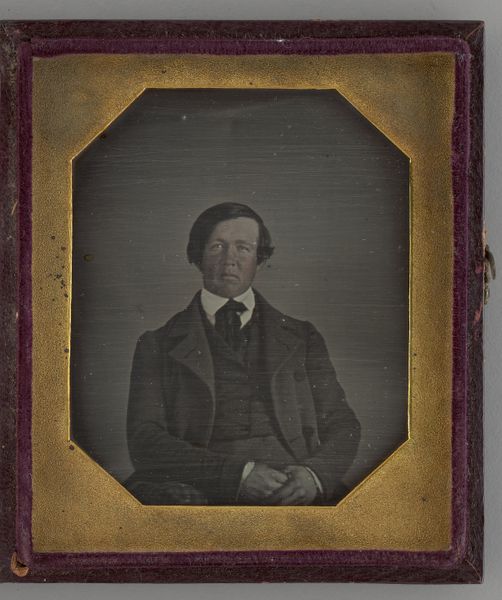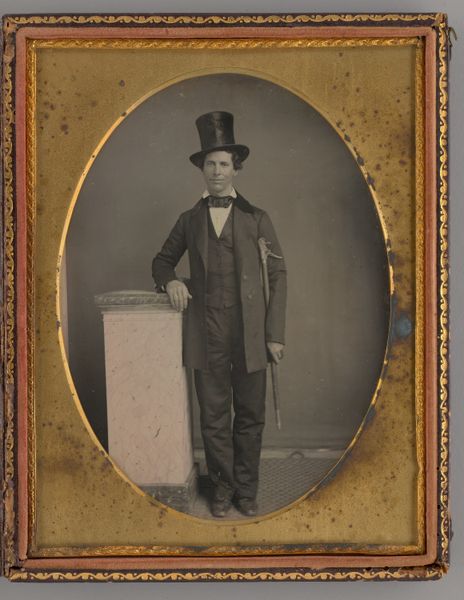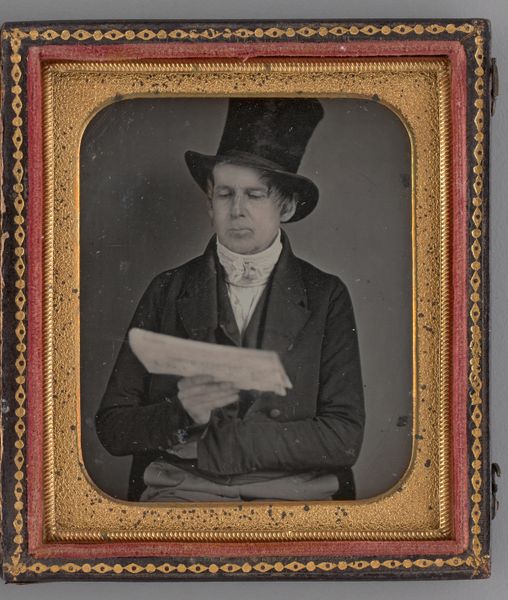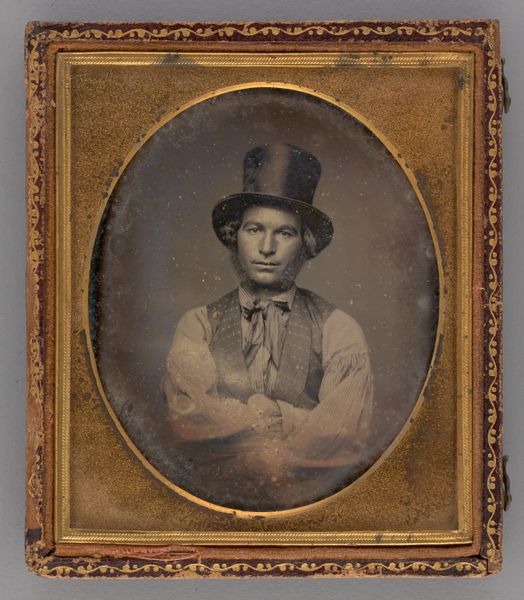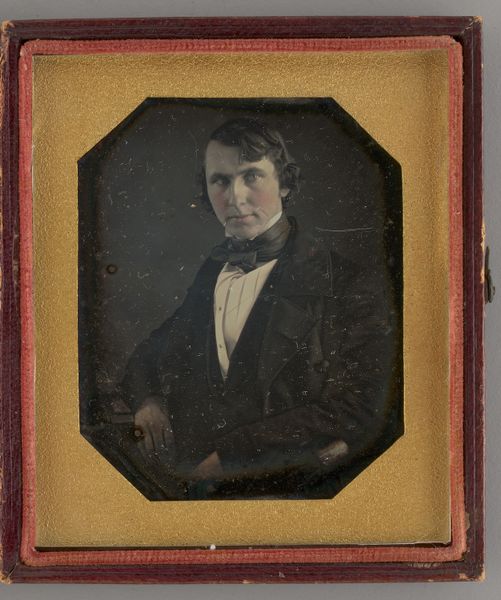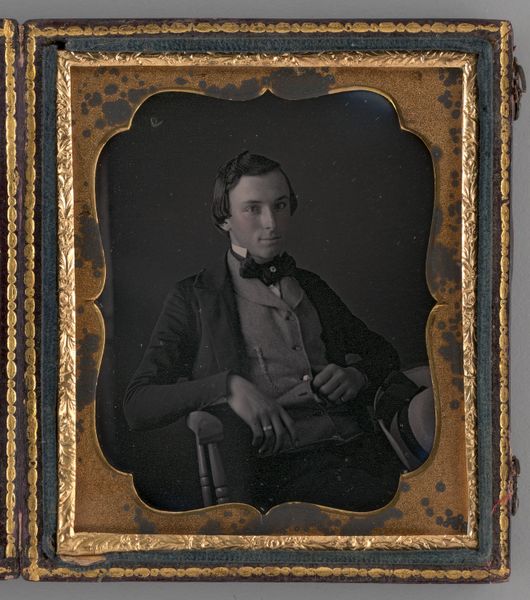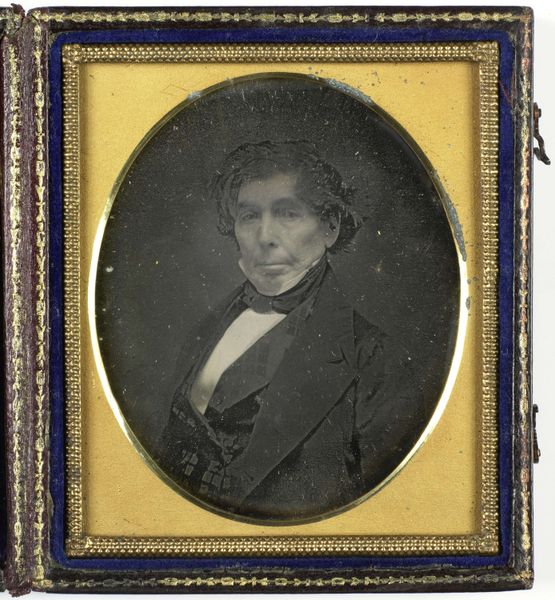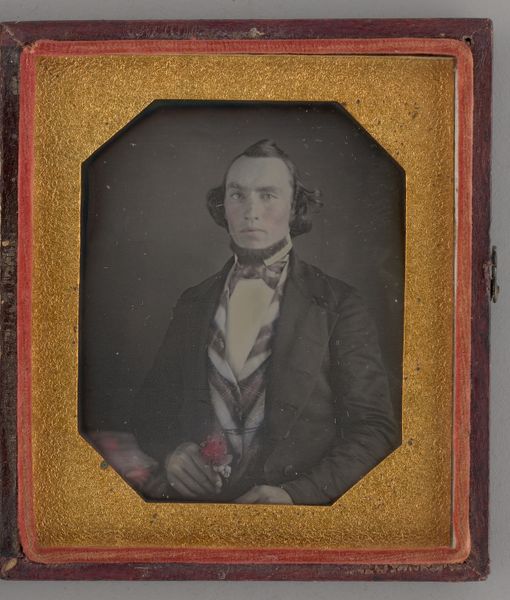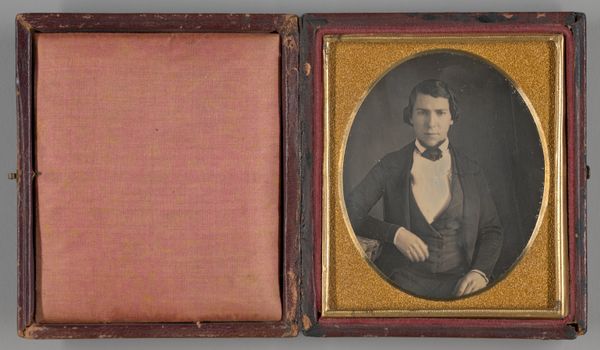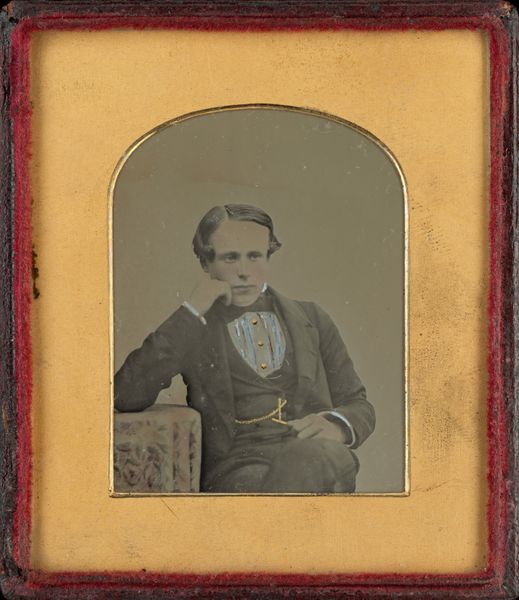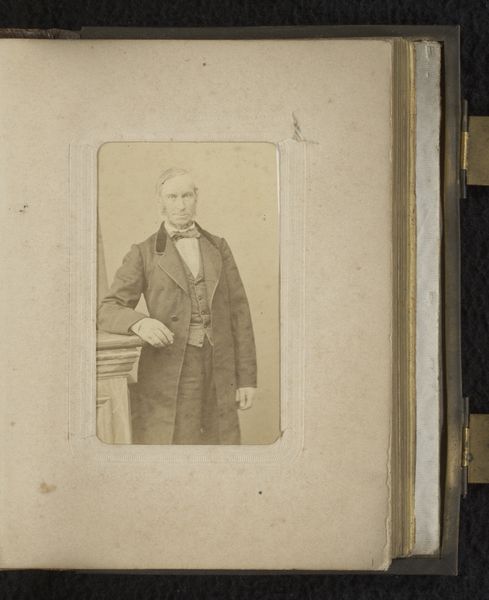
Dimensions: 8.2 × 7 cm (plate); 9.5 × 8 × 1.5 cm (case)
Copyright: Public Domain
Curator: Here we have an untitled daguerreotype from 1853, attributed to an anonymous photographer, residing here at The Art Institute of Chicago. Editor: The cool tones really emphasize the subject's reserved posture and the enclosed feeling of this intimate portrait. It gives the sitter a very respectable, perhaps slightly melancholic air. Curator: Let’s delve into the process of daguerreotypes. Each plate was meticulously crafted, coated with light-sensitive silver iodide. This material fragility demands attention. Considering the socio-economic factors of 1853, the time and resources needed for a portrait like this makes it a signifier of wealth. Editor: Indeed. And notice the top hat; while certainly a status symbol, consider also what the hat conceals: intellect, position. A man's identity, or rather, the one he wanted the world to see. Look at the way he is posed, in almost theatrical formality, clutching what seems to be a book, perhaps signifying knowledge. This all adds to this feeling. Curator: The image isn't just about its symbolic trappings, though; let's examine the reality. Daguerreotypes create a direct positive, a mirrored reflection of the individual. Every mark, every detail on that silver plate holds significance. Unlike paintings that can be edited, manipulated, and layered by the artist, daguerreotypes demand the careful management of materials and the sitter’s position, yet offer an unedited snapshot in time. Editor: The clothing contributes, too. The black attire almost blends into the background. It seems to convey that, though this is a man of some importance, the details that signify wealth in that period—expensive garments, fashionable accessories— are overshadowed, or secondary, to what the person is. He wants the essence of his spirit to shine. Curator: Precisely. The creation and consumption of these portraits offer a window into how individuals participated in the rising Industrial Revolution while yearning to retain a hold on their individuality. They're commodities made through grueling work. Editor: This encounter reminds us how portraits operate both as markers of status and records of human stories that, even today, continue to unfold and prompt different perspectives. Curator: It also underscores how technology can shape identity, dictating representation and mediating human interactions through light, chemistry, and social performance. Editor: Thank you, that provides a fresh consideration of our material culture with symbolism still embedded today.
Comments
No comments
Be the first to comment and join the conversation on the ultimate creative platform.
